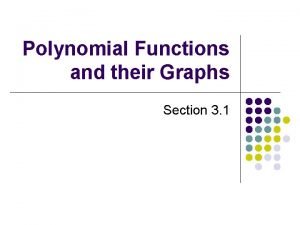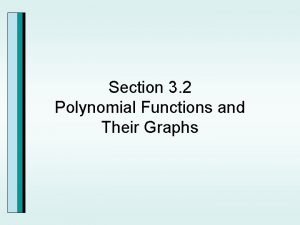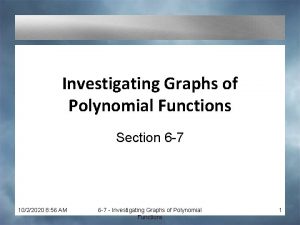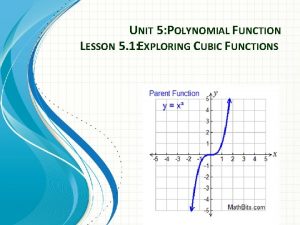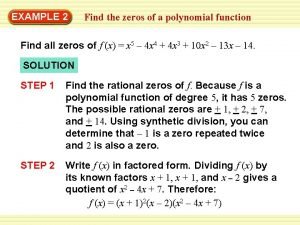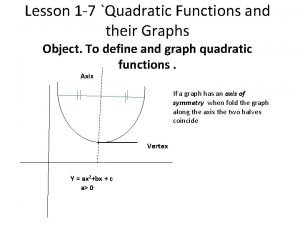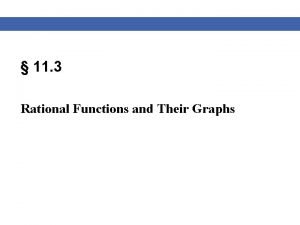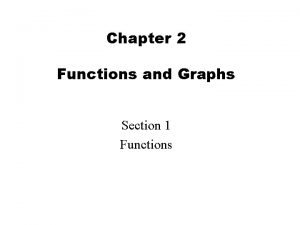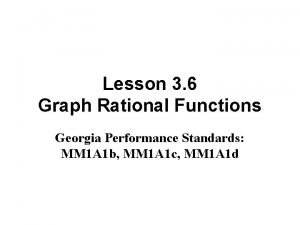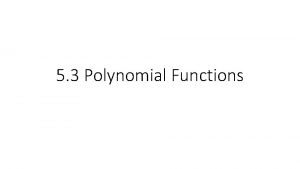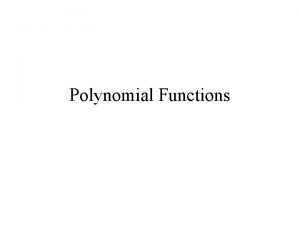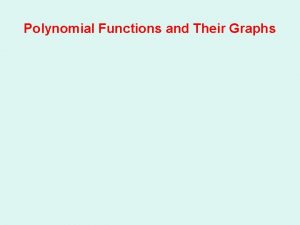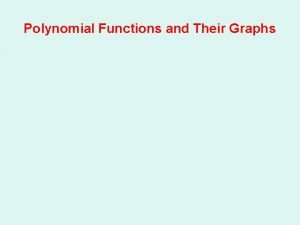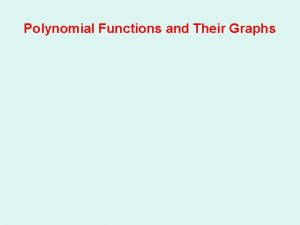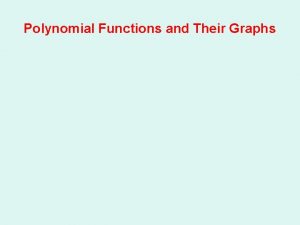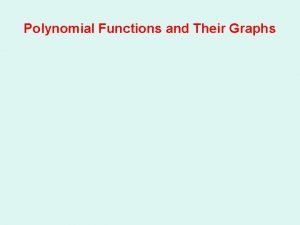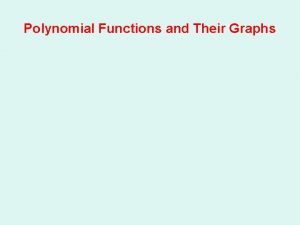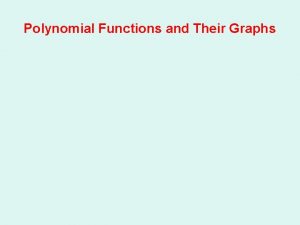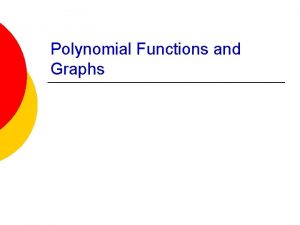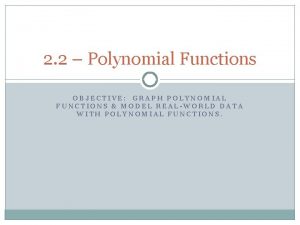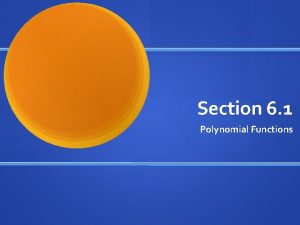3 1 Polynomial Functions and their Graphs fx





















- Slides: 21

3. 1 Polynomial Functions and their Graphs

f(x) = 5 3 x + 4 6 x – 3 2 x + 7 x - 6

• The graph of a polynomial function is always a smooth curve – no breaks, holes, or corners. • Recall section 2. 4 about stretches, shifts, etc. • EX: Graph y = x 4 and y = (x – 2)4

Polynomial?

End Behavior & the Leading Coefficient • Tells what happens as x becomes large in the positive or negative direction. x gets bigger x gets smaller

End behavior is determined by the term that contains the highest power of x. (leading coefficient) Always opposite Always the same

EX Determine the end behavior: • f(x) = -3 x 3 + 20 x 2 + 60 x + 2 • f(x) = -7 x 4 + 5 x 3 + 4 x - 7

Using Zeros to Graph If P is a polynomial and c is a real number, then the following are equivalent: • ‘c’ is a zero if P(c) = 0 • X = c is an x-intercept of the graph of P • X = c is a solution of the equation P(x) = 0 • X – c is a factor of P(x) Find factors Find zeros

Find the zeros by factoring: • P(x) = x 2 + x - 6

If you have positive and negative yvalues, your polynomial has to have at least one zero.

Table must include: • Zeros • A point in between each zero • Y-intercept Need to know end behavior

P(x) = (x + 2)(x – 1)(x – 3) • Find the zeros and graph. X F(x) -2 0 1 0 3 0

Multiplicity m is the exponent Passes through Bounces off

P(x) = (x + 2)(x – 1)(x – 3)2 • Find the zeros and graph. X F(x) -2 0 1 0 3 0

PHONE NUMBER • Key in the 1 st three digits of your phone number (not the area code) • Multiply by 80 • Add 1 • Multiply by 250 • Add the last four digits of your phone # AGAIN • Subtract 250 • Divide by 2 • SEE YOUR PHONE NUMBER ON YOUR CALCULATOR? ? ?

P(x) = 3 x 4 – 5 x 3 – 12 x 2 • Find the zeros, y-int, and graph. X F(x) -4/3 0 0 0 3 0

P(x) = x 3 + 3 x 2 – 9 x - 27 • Find the zeros, y-int, and graph. X F(x) -3 0

Local Extrema The number of local extrema must be less than the degree.

P(x) = 3 x 4 – 5 x 3 – 12 x 2 • Find the zeros, y-int, and graph. X F(x) -4/3 0 0 0 3 0

P(x) = (x + 2)(x – 1)(x – 3) • Find the zeros and graph. X F(x) -2 0 1 0 3 0

Homework pg 262 #1, 3, 5 - 10, 13, 15, 16, 21, 25 -45 odd
 End behavior chart
End behavior chart Types of polynomial
Types of polynomial Polynomial functions and their graphs
Polynomial functions and their graphs Polynomial functions and their graphs
Polynomial functions and their graphs Investigating graphs of functions for their properties
Investigating graphs of functions for their properties Investigating graphs of functions for their properties
Investigating graphs of functions for their properties Investigating graphs of polynomial functions
Investigating graphs of polynomial functions 5-4 analyzing graphs of polynomial functions
5-4 analyzing graphs of polynomial functions Investigating graphs of polynomial functions
Investigating graphs of polynomial functions Unit 5 polynomial functions
Unit 5 polynomial functions Zero polynomial
Zero polynomial Horizontal asymptotes rules
Horizontal asymptotes rules Quadratic functions and their graphs
Quadratic functions and their graphs Removable and non removable discontinuities
Removable and non removable discontinuities Chapter 1 functions and their graphs
Chapter 1 functions and their graphs Rational functions and their graphs
Rational functions and their graphs Common functions and their graphs
Common functions and their graphs Exponential functions and their graphs
Exponential functions and their graphs Chapter 2 functions and their graphs answers
Chapter 2 functions and their graphs answers How to find vertical asymptotes of a function
How to find vertical asymptotes of a function Lesson 3: rational functions and their graphs
Lesson 3: rational functions and their graphs Good state and bad state graphs in software testing
Good state and bad state graphs in software testing

